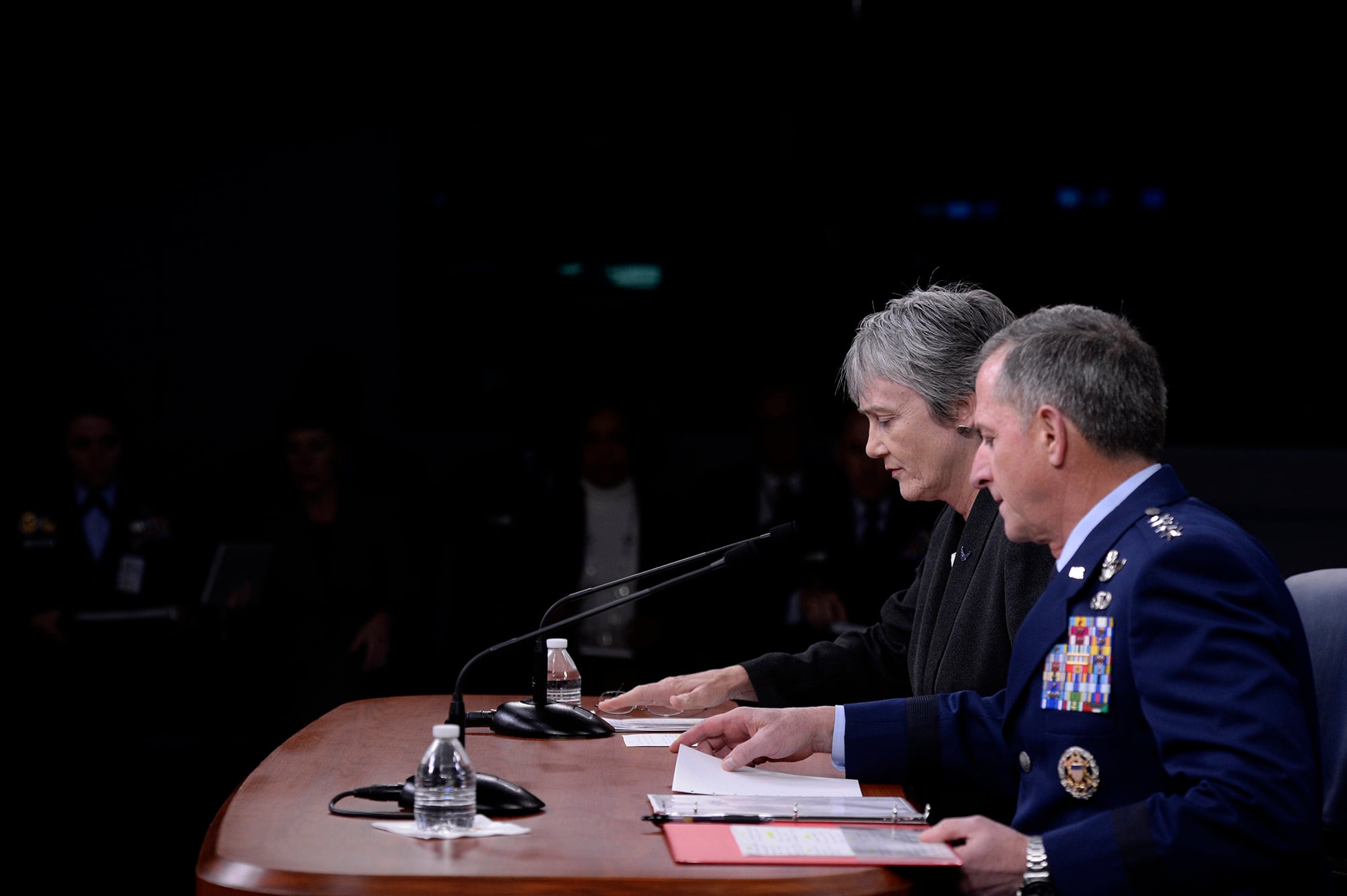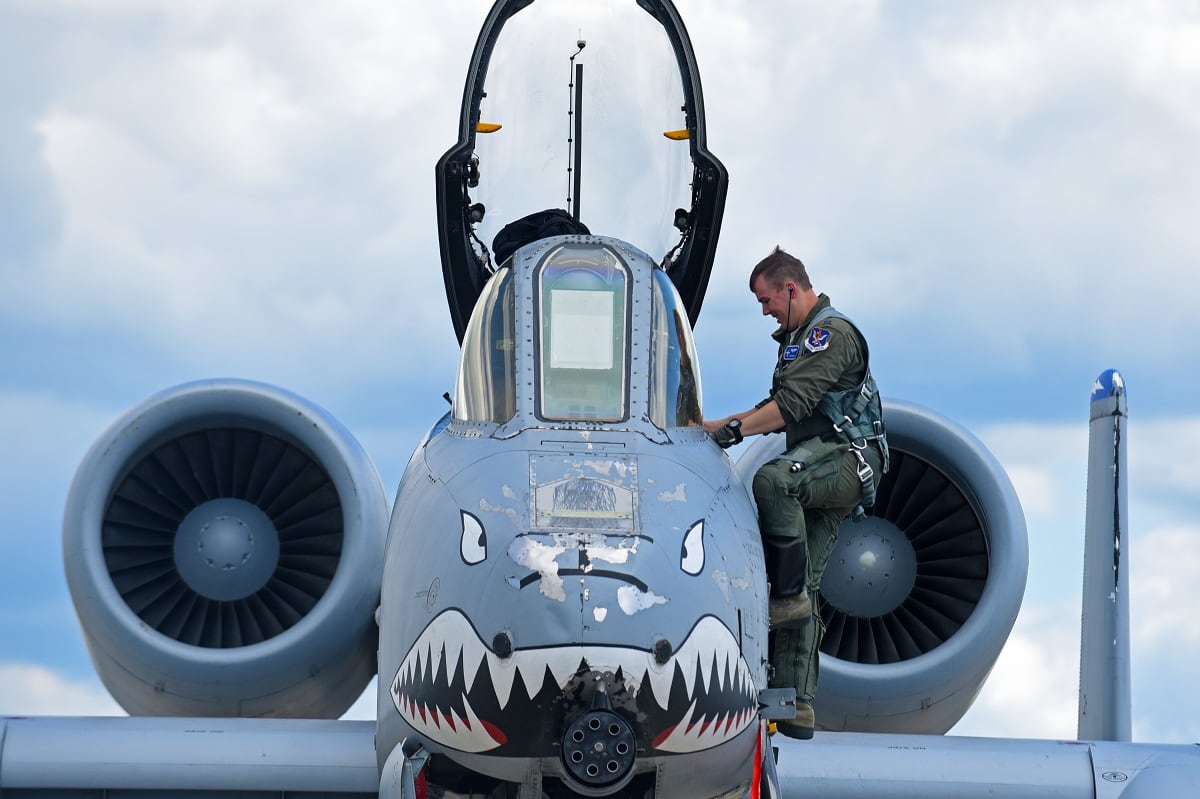The Air Force’s pilot shortage has now swelled to roughly 2,000 pilots ― a shortfall of about one in 10 ― in a significant worsening of the service’s most pressing personnel emergency.
The falling numbers prompted Air Force Secretary Heather Wilson and Chief of Staff Gen. Dave Goldfein to issue alarming warnings about the long-term health of the service’s pilot ranks ― and the nation’s ability to continue to fight its wars overseas.
“With 2,000 pilots short, it’ll break the force,” Wilson told reporters Thursday during the annual State of the Air Force news conference at the Pentagon. “It’ll break it.”
As recently as last month, Air Force officials were citing a pilot shortfall of about 1,500 in all across the total force, including about 1,300 fighter pilots.
But the latest tally of manning figures at the end of the fiscal year showed that the shortfall had grown by about 500. Updated figures on the fighter pilot shortage were not immediately available.
The Air Force’s pilot corps needs to number about 20,000 across the active duty, Guard and Reserve.
This significant undermanning is threatening the Air Force’s readiness. So far, the Air Force has been able to keep its pilot shortages stateside and fully man its deployed squadrons to make sure combat missions do not suffer.
But, Goldfein said, that won’t last forever at this rate.
“If we don’t turn this around, then we’ll end up heading down that path” of deployed squadrons suffering, Goldfein said.
RELATED

The Air Force has rolled out a wide variety of programs over the last year and a half to try to stem the pilot shortage. They include:
- Dramatically increasing retention bonuses to try to convince pilots not to leave for lucrative commercial airline jobs.’
- Receiving permission from the White House to bring back more retired pilots, some of whom will serve as instructor pilots.
- Adding more support staff to take over administrative duties that were keeping pilots out of cockpits.
- Working to increase the training pipeline. The Air Force now produces 1,200 new pilots each year and is working to get that up to 1,400, although officials say it needs to hit 1,600 to keep up with the pilot exodus.
RELATED

But even with all those programs, the problem continues to worsen.
When asked why, Wilson pointed to the relatively small size of today’s Air Force compared to the wide variety of missions it is being asked to carry out against the Islamic State, in Afghanistan, supporting the effort to pressure North Korea, and elsewhere throughout the world.
It’s taking a toll on airmen, she said ― especially pilots.
“We’re burning out our people,” Wilson said. “Surge has become the new normal in the United States Air Force. You can do that for a year, or two years, maybe even three or four years. But I met someone last week who has just come back from his 17th deployment. Seventeen deployments. And at some point, families make a decision that they just can’t keep doing this at this pace.”
A shortage of spare parts, munitions and flying hours available for the pilots the Air Force does have is also contributing to the readiness problem.
Goldfein said the lack of maintainers is also having an effect on readiness.
When Goldfein started flying F-16s in the 1980s, he would meet his crew chief and a secondary crew chief before each flight. They would walk around the plane, he’d taxi out, and then meet the crew on the runway that would pull the pins to arm his weapons and give it one last look before taking off. He’d then fly to another base and meet a different crew to do the necessary post-flight work on his jet.
But today, he said, pilots taxi slow, because there’s often only one crew chief, who has to get in a van and drive to the end of the runway to pull the pins. And then the pilot has to wait before taking off because that same crew chief has to hitch a ride on a C-17 with his tools to fly ahead and meet that pilot at his destination.
“This is the level of numbers that we’re dealing with here,” Goldfein said. “We’re making the mission happen. But we’re having to do it very often on the backs of our airmen. The tension on the force right now is significant.”
The Air Force is continuing to try to increase pilot production to fix the problem in the long term. But that is an effort that is going to take years, Wilson said, to properly train and absorb these pilots to the point where they are effective.
And Congress needs to help out by lifting the sequestration caps that have limited the service’s budget, they said.
“If we go through the sequester again, a 2,000-pilot shortage will be a dream,” Wilson said. “People will walk.”
Stephen Losey is the air warfare reporter for Defense News. He previously covered leadership and personnel issues at Air Force Times, and the Pentagon, special operations and air warfare at Military.com. He has traveled to the Middle East to cover U.S. Air Force operations.





